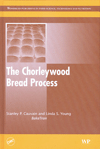Reducing bread waste through optimized preservation

SDI Productions via E+ / Getty Images

Emma Cahill
Remarkably, a UK study has shown that some 50% of consumer food waste can be prevented by extending product shelf life.[1] Here in the US, according to the UN Food and Agricultural Organization (FAO), the average American consumer wastes ten times more food annually than consumers in Southeast Asia. In emerging markets, 60% of food waste occurs early in the supply chain—before it even reaches the retailer—and can often be addressed by enhancing preservation practices.
According to the Natural Resources Defense Council, bread and baked goods represent the largest volume of processed food wasted globally as a category (fresh produce comprises the highest volume overall), with 25% of consumers not finishing their bread before it goes bad.[2] In the UK, 33% of bakery employees believe the short shelf life of products plays a large role in waste.[3] In the US, a full one-third of bread that makes it to market ends up as waste.[4] Clearly, there is substantial scope to reduce the volume of bread waste around the world.
And make no mistake: Reducing food waste by implementing innovative preservation technologies is more important than ever to ensuring that the world’s food stocks are able to keep people fed Recently, FAO published an alert on the world’s hunger hotspots that identified 20 countries already contending with critical food shortages. Exacerbating this precarious situation is the added pressure on global stocks of staple goods such as wheat.
Ingredients to extend shelf life by an average of 50%
Importantly, baked goods offer a key opportunity for the food industry to ensure that limited wheat stocks are utilized optimally. Technologies such as enzymes, organic acids, emulsifiers, fermented vinegars, and other ingredients—can extend the shelf life of bread by protecting freshness, while at the same time ensuring an appealing taste right to the last day of viable use. In addition to the positive benefit of reducing waste, these technologies can lower distribution costs by lessening the frequency of restocking.
We understand that shelf-life extension is multifaceted. Getting a bread from nine days to 20 days mold free is great, but if it is stale and no longer looks or tastes good, it’s not going to be consumed and will end up as waste. That is the lens through which sustainable nutrition needs to meet consumer expectations for experience, convenience and ingredients.
The possible preservation solutions available to the baking industry fall under two general categories: conventional and clean label. These can be applied through a building-blocks framework that puts various ingredients to work in a complementary way to act together to extend shelf life and protect product quality.
Popular conventional preservation solutions used in bread tend to be either propionate-based or acetate-based; globally, calcium propionate is the most widely used solution. Acetates, on the other hand, deliver a pleasant vinegar flavor and can be labeled as an acidifier or flavor, and offer a number of benefits in such markets as rye bread and other Germanic breads.
Among the solutions that can be considered clean label are fermentate-based options, with fermented wheat leading the way. Fermented wheat is an ingredient that has a natural home on a bread label, much like sourdough. These and other solutions, including fermented sugar and fermented rice, cater to gluten-free and specialty bread production. Fermented wheat is an ingredient that has a natural home on a bread label, much like sourdough.
Vinegar-based preservation is another emerging clean-label option for yeast-raised bakery applications, as its flavor is favorably accepted by consumers and it does not adversely affect the production process. These solutions have tested closest to bread baked without preservatives in a consumer study across taste, texture, crumb, and general appeal.
These interventions can deliver significant benefits by increasing mould-free shelf-life days in bread loave sand concomitant reductions in distribution and overall waste. Given the challenges expected to face the world in the next few years, bakery manufacturers can do their part by making their own products—and by definition global wheat stocks—last as long as possible. Thankfully, the technologies are already available to help meet these vital social objectives.
[1] “Reducing Food Waste by Extending Product Life”, WRAP UK. “Using consumer surveys to determine food sustainability”, Martindale, W. British Food Journal 116(7):1194-1204.
[2] Natural Resources Defense Council 2017.
[3] Too Good To Go, UK, 2021.
[4] Statista, 2016.
Looking for a reprint of this article?
From high-res PDFs to custom plaques, order your copy today!






